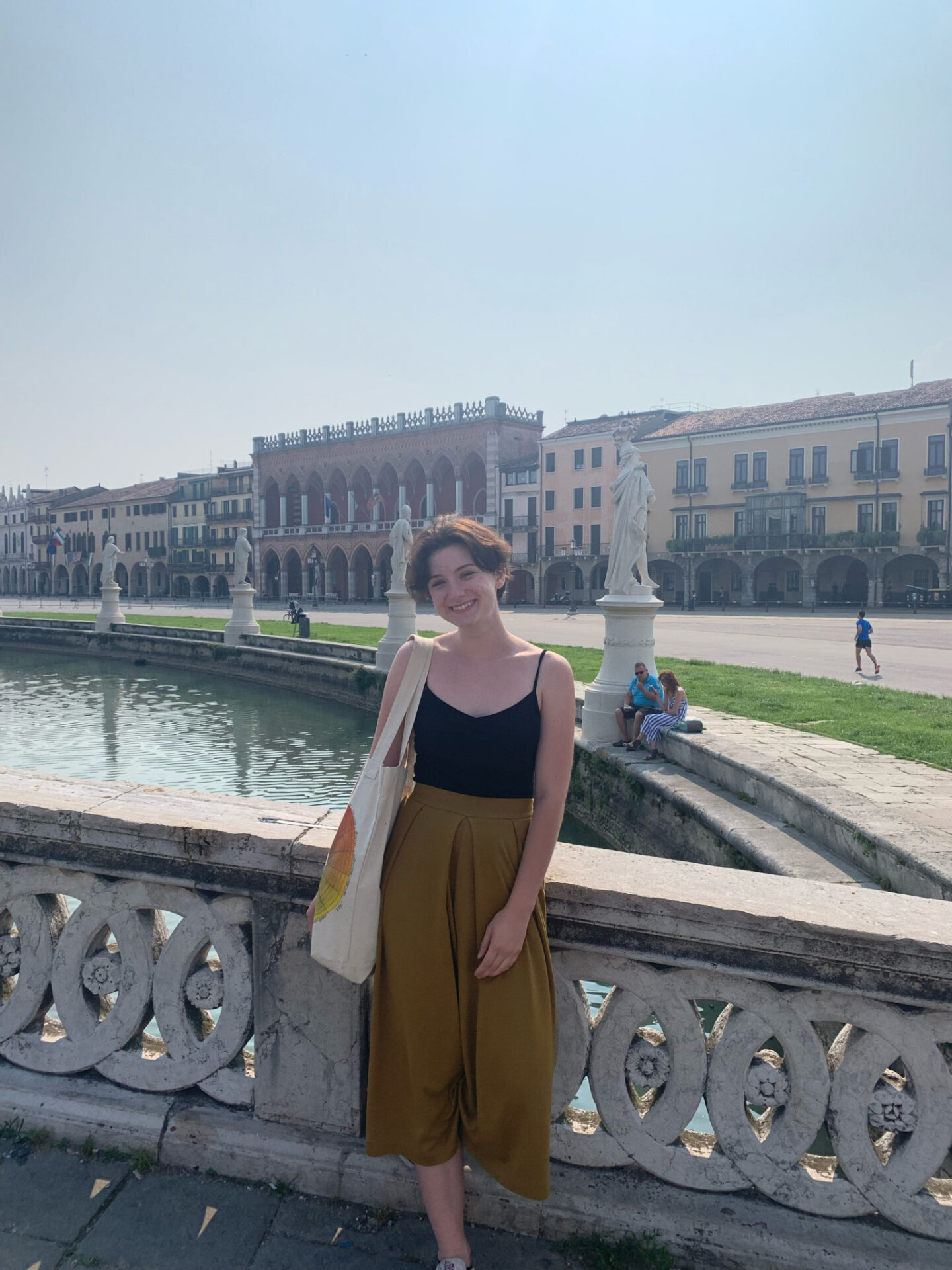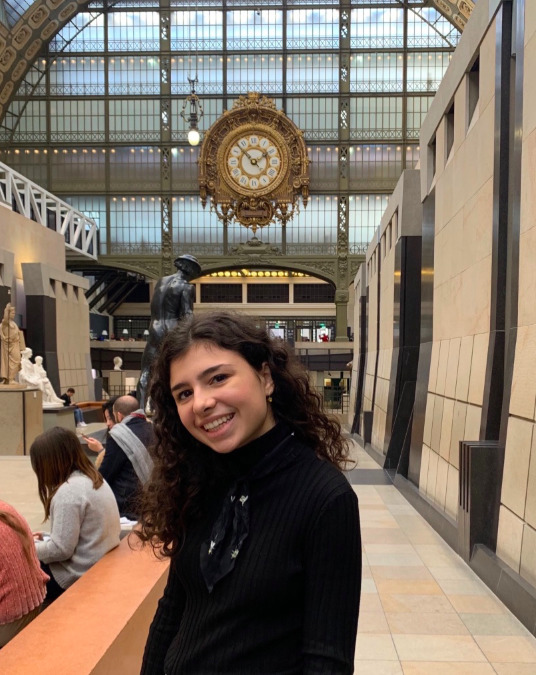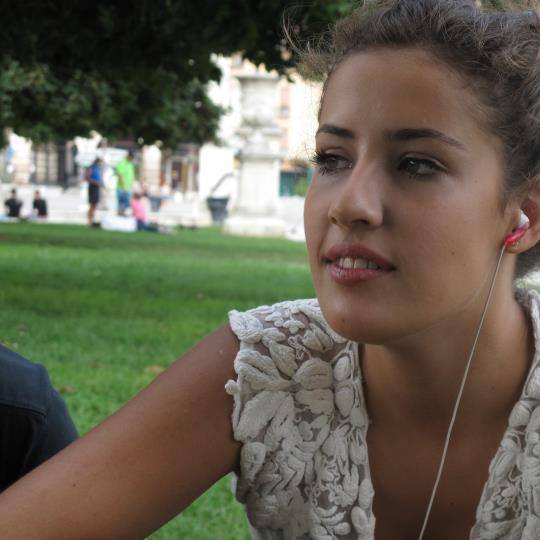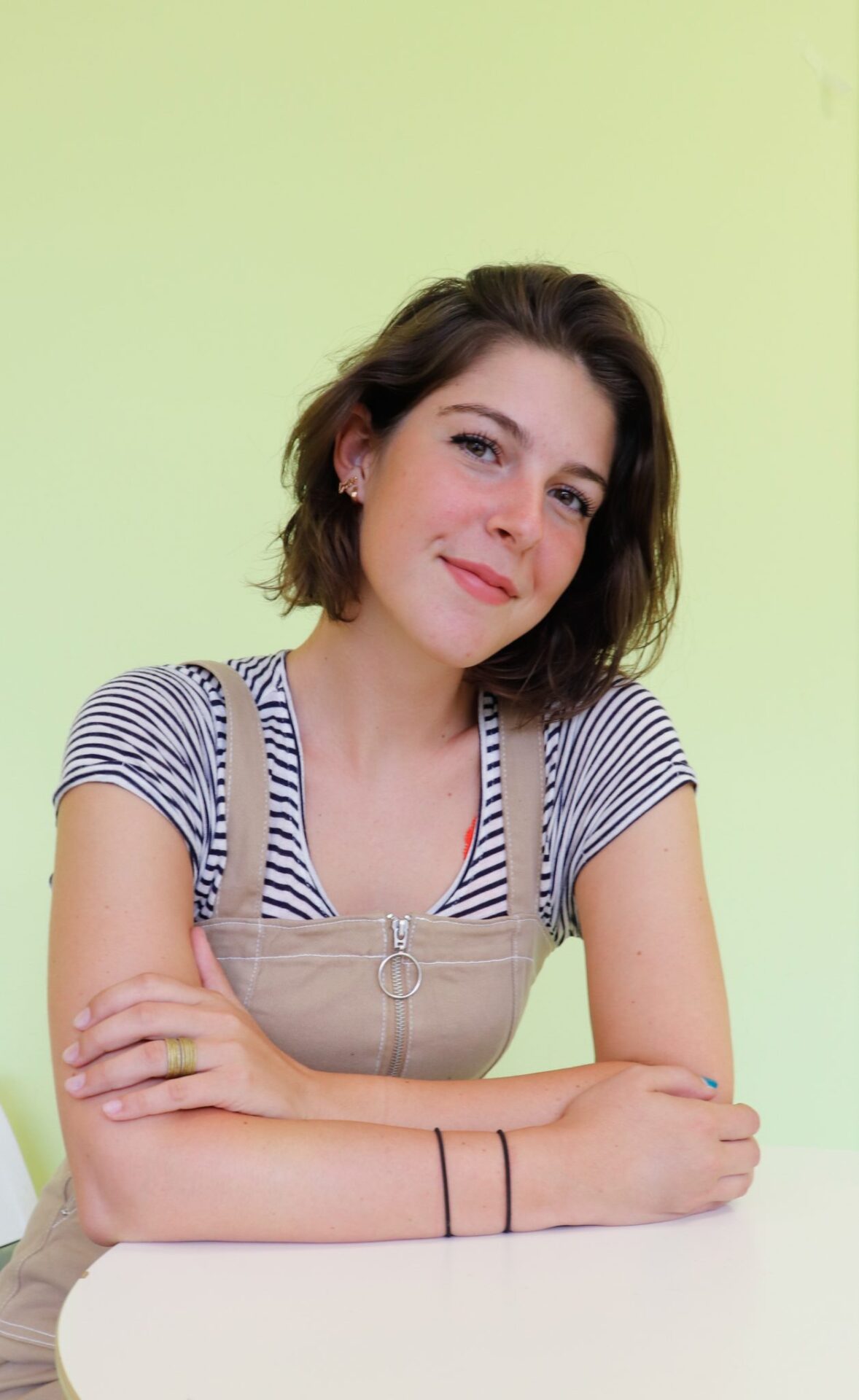This season’s interns are ready to introduce themselves to the CIMA community! Meet Aimee Morris, Carina D’Urso, Claudia Roma, and Matilde Manicardi.
Aimee Morris

How did you first become interested in art history?
From performing in my elementary school’s Cabaret Troupe to training in classical singing as a young adult, I have always loved the arts. My love affair was furthered when I took an art history course in high school. I traveled to museums around New York City with my peers, and I pored over my textbook in the evenings, yearning to constantly engage with art. During my travels to Italy, I was moved by the art I encountered, feeling an emotional connection to the works on the walls. I became passionate about art as a tool for empathy, a feeling that has galvanized me, inspiring me to begin pursuing a career in museum education and administration.
What’s your favorite museum or gallery exhibit you’ve seen recently?
I absolutely loved the Rubin Museum of Art’s exhibition, Shahidul Alam: Truth to Power, a survey which captures the emotional and artistic expression of the documentary photographer. The exhibition delves into Alam’s work as an agent for change, showcasing the ways in which he amplifies the voices of those within his community in Bangladesh. The collection shares his tumultuous journey as a documentarian, as well as the solidarity that allows him to continue connecting with the marginalized.
What do you like to do when you are not working?
On an ordinary day, I can be found exploring the halls of the cultural institutions that dwell within New York City. I love creating art in my own life, and I delve into my passion for the performing arts by co-directing the productions of my college’s theater club. Furthermore, I enjoy singing, with a special interest in Italian opera. I savor the time I spend practicing my Italian with my parents and my nonna. I love to read, and I spend countless hours immersed within the pages of books. I adored Elena Ferrante’s quartet, and I am currently working my way through her other novels!
What do you hope to gain from this experience at CIMA? What are things that you are most looking forward to?
I am interested in outreach and the planning and facilitation of public programming. I am excited to witness projects of this nature as they come to fruition at CIMA, through the small, non-profit environment that thrives here. I love modern art, and I am particularly interested in the social and political movements that characterized the 20th century. I feel very grateful to be interning at a place that is known for celebrating the intersection between art and the Italian language, and I cannot wait to share my enthusiasm with those who share my passion!

How did you first become interested in art history?
My first approach with art was when I was about 5 years old. My father’s aunt was a painter and she brought me to her studio. Seeing her working unconsciously changed my life. After that, I studied classical subjects in high school and I always developed my interest in creative practices too such as music, dance, cinema, performing arts projects. Exposure to art production and art history since when I was young has been a crucial part of my educational path. Therefore, I continue my studies and work experiences focusing on art management and art history.
In the end, it is easy to say that this background led me to build curiosity and social consciousness not only through all fields of culture, but also through all fields of life.
What do you like to do when you are not working?
I am a very sociable person and I think that networking is a key element for a creative life at any level. This is why in my free time I like to meet new people and friends not only to spend enjoyable moments together, but also to learn and grow from these connections. Besides that, I go to vintage shops, listen to old vinyls, taste food, go to museums and try to enjoy as much as I can the cities that I am able to visit.
When was your first time in New York? What surprised you the most about this city?
My first time in New York was about 10 years ago. Being a young teenager visiting for the first time was very exciting. What surprised me the most was the crowd, the mixture of cultures and its spectacular places. The kind of emotion that the city left me has indeed withstood until now, when I am a 24 year old student approaching the job market. I strongly believe that New York is still the global centre for creative industries and the place to be in order to understand them.
If you could purchase any painting, which one would it be? Why?
The two paintings that come to my mind are surely the Arnolfini Portrait by Van Eyck and one of Monet’s Nymphs (I actually have a poster of it in my room). Both of them are aesthetically pleasing to me, even if they come from very different movements. Above all, they have curious and interesting stories behind their creation that still excite and inform people looking at them.
What led you to CIMA? What do you hope to gain from this experience?
As I mentioned before, I am currently getting a master’s degree in Art Management and this is the field in which I would like to focus my future career.
I have already worked in a commercial gallery and it was an amazing experience, but I want to understand more about what is going on in the non-profit side of the art world. The relationship with visitors, the research and communication projects and exhibition management are indeed what interests me the most. I hope to learn as much as I can from everyone I will meet and all the experiences that I will be able to try while I am in New York.

How did you first become interested in art history?
I became interested in art history when I realized the fundamental importance of art, throughout history, in expressing political and social changes. I find extremely fascinating the way in which art played, and still plays, such a huge role in giving voice to incredible stories and ideas that otherwise we would never have met. Recently, I am becoming increasingly interested in the way in which art museums and art sites in general are able to create communities around them. I think that it is a beautiful and enriching opportunity for each of us, especially considering the extremely individualistic society in which we are living.
Best 3 museums or art sites/cities worldwide, according to your taste?
One of my favorite nonprofit spaces is called The Kitchen and it’s located in Chelsea, Manhattan. I find their program of artists’ talks, performances and literary events extremely original and fascinating. In Milan I’m fond of a place called Base Milano, located in a spacious industrial building, it often hosts photography exhibitions, performances and workshops. Another space that I love is the section of Louvre dedicated to Greek statues, I think that I could be sitting in front of them just observing their shapes and volumes for hours!
If you could purchase any painting, which one would it be? Why?
I think that I would choose one of the huge works by Cy Twombly that are displayed inside The Menil Collection in Houston. In particular, the one that I admire most is Triumph of Galatea, 1961. I love his spontaneity and the fact that, despite the first impression of chaos, it hides a perfect harmony behind the composition of shapes and colors.
What do you like to do when you are not working?
I try to keep up to date on new exhibitions and events that I find interesting like artists’ talks, concerts, lectures and theatre or dance performances. I usually spend some time during the day reading my current book and I have a film camera and a small notebook always with me so I can use them at any time.

